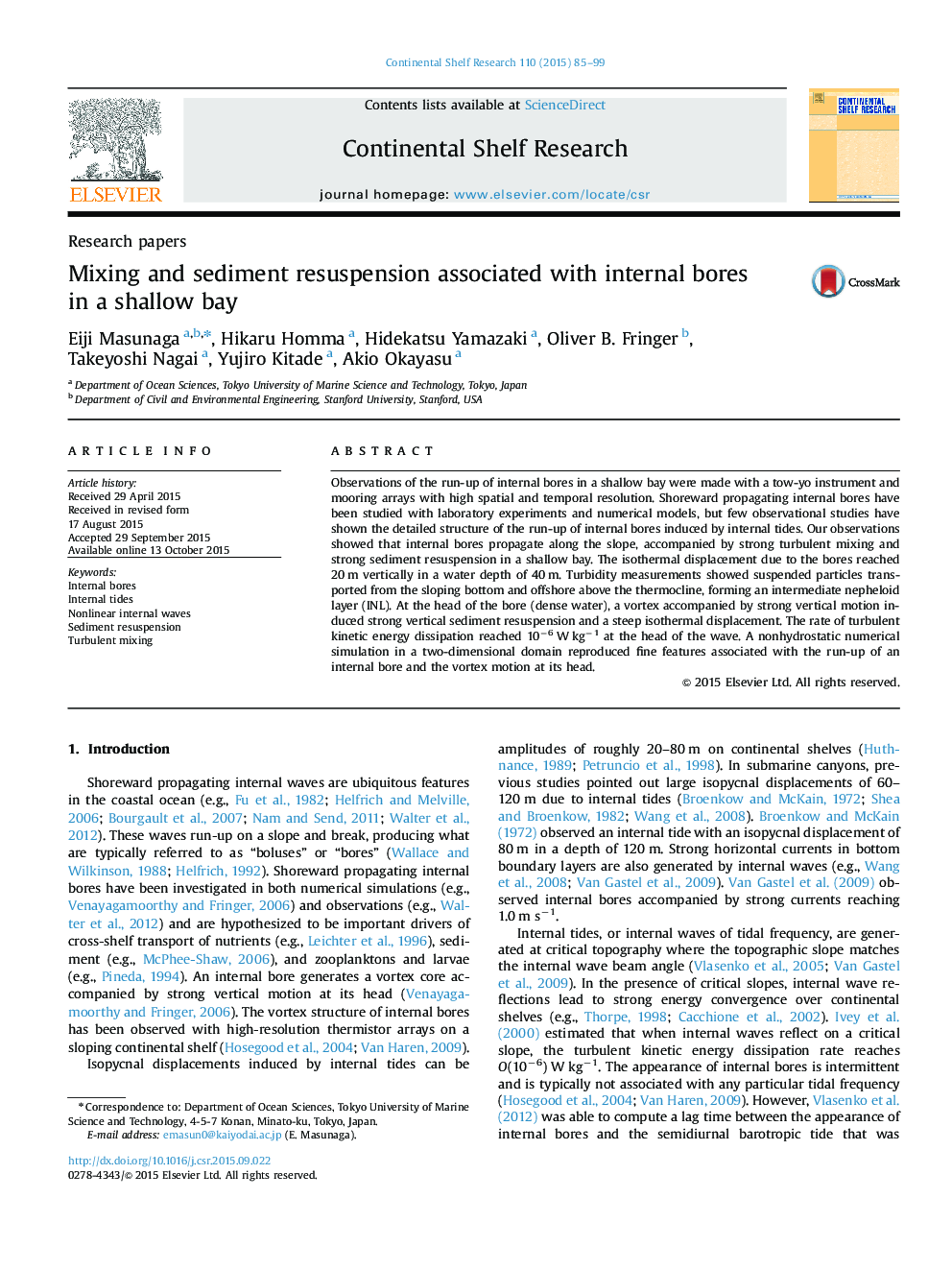| Article ID | Journal | Published Year | Pages | File Type |
|---|---|---|---|---|
| 6382977 | Continental Shelf Research | 2015 | 15 Pages |
â¢Fine features of shoreward propagating internal bores were observed in a shallow bay.â¢Internal bores generate the vortex motion accompanied by strong currents.â¢Numerical results show fine features in the runup of internal bores in the bay.
Observations of the run-up of internal bores in a shallow bay were made with a tow-yo instrument and mooring arrays with high spatial and temporal resolution. Shoreward propagating internal bores have been studied with laboratory experiments and numerical models, but few observational studies have shown the detailed structure of the run-up of internal bores induced by internal tides. Our observations showed that internal bores propagate along the slope, accompanied by strong turbulent mixing and strong sediment resuspension in a shallow bay. The isothermal displacement due to the bores reached 20Â m vertically in a water depth of 40Â m. Turbidity measurements showed suspended particles transported from the sloping bottom and offshore above the thermocline, forming an intermediate nepheloid layer (INL). At the head of the bore (dense water), a vortex accompanied by strong vertical motion induced strong vertical sediment resuspension and a steep isothermal displacement. The rate of turbulent kinetic energy dissipation reached 10â6Â WÂ kgâ1 at the head of the wave. A nonhydrostatic numerical simulation in a two-dimensional domain reproduced fine features associated with the run-up of an internal bore and the vortex motion at its head.
